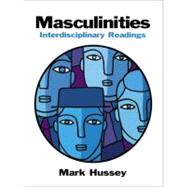
| Preface | vii | ||||
| The Social Construction of Gender: What Makes a Man? | 1 | (55) | |||
|
3 | (22) | |||
|
|||||
|
25 | (17) | |||
|
|||||
|
42 | (4) | |||
|
|||||
|
46 | (10) | |||
|
|||||
| Growing Up: At Home, At School | 56 | (82) | |||
|
57 | (12) | |||
|
|||||
|
69 | (4) | |||
|
|||||
|
73 | (6) | |||
|
|||||
|
79 | (13) | |||
|
|||||
|
92 | (8) | |||
|
|||||
|
100 | (16) | |||
|
|||||
|
116 | (22) | |||
|
|||||
| Playing Games, Learning Gender | 138 | (24) | |||
|
140 | (13) | |||
|
|||||
|
153 | (3) | |||
|
|||||
|
156 | (2) | |||
|
|||||
|
158 | (4) | |||
|
|||||
| Husbands, Sons, and Fathers | 162 | (44) | |||
|
164 | (9) | |||
|
|||||
|
|||||
|
173 | (8) | |||
|
|||||
|
181 | (14) | |||
|
|||||
|
195 | (11) | |||
|
|||||
| Working Lives, Gendered Institutions | 206 | (42) | |||
|
208 | (9) | |||
|
|||||
|
217 | (10) | |||
|
|||||
|
227 | (4) | |||
|
|||||
|
231 | (17) | |||
|
|||||
| Sex, Love, and Power | 248 | (34) | |||
|
250 | (6) | |||
|
|||||
|
256 | (6) | |||
|
|||||
|
262 | (9) | |||
|
|||||
|
271 | (8) | |||
|
|||||
|
279 | (3) | |||
|
|||||
| Black Masculinities: A Unique History | 282 | (47) | |||
|
284 | (14) | |||
|
|||||
|
298 | (19) | |||
|
|||||
|
317 | (6) | |||
|
|||||
|
323 | (6) | |||
|
|||||
| At War: The Shadow of a Soldier | 329 | (48) | |||
|
331 | (14) | |||
|
|||||
|
345 | (10) | |||
|
|||||
|
355 | (3) | |||
|
358 | (19) | |||
|
|||||
| Men Changing: Visions of a Future | 377 | ||||
|
379 | ||||
|
|||||
|
389 | ||||
|
The New copy of this book will include any supplemental materials advertised. Please check the title of the book to determine if it should include any access cards, study guides, lab manuals, CDs, etc.
The Used, Rental and eBook copies of this book are not guaranteed to include any supplemental materials. Typically, only the book itself is included. This is true even if the title states it includes any access cards, study guides, lab manuals, CDs, etc.